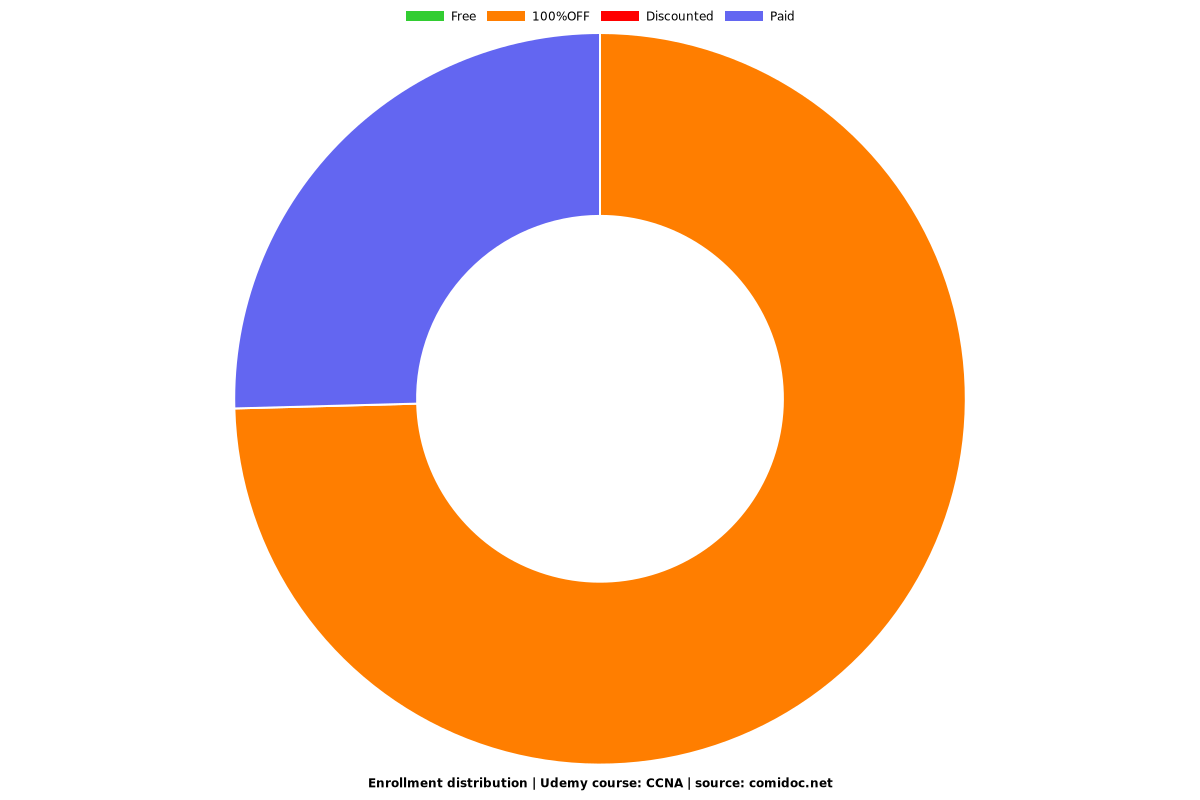CCNA
To become Network L1/L2 - Engineer, Learn how to Install, Configure, Basic IPv4/6 Networks. From Beginner to Expert.

What you will learn
After taking this course, you should be able to:
Identify the components of a computer network and describe their basic characteristics
Understand the model of host-to-host communication
Describe the features and functions of the Cisco Inter network Operating System (IOS®)software
Describe LANs and the role of switches within LANs
Describe Ethernet as the network access layer of TCP/IP and describe the operation of switches
Install a switch and perform the initial configuration
Describe the TCP/IP Internet layer, IPv4, its addressing scheme, and subnetting
Describe the TCP/IP Transport layer and Application layer
Explore functions of routing
Implement basic configuration on a Cisco router
Explain host-to-host communications across switches and routers
Identify and resolve common switched network issues and common problems associated with IPv4 addressing
Describe IPv6 main features and addresses, and configure and verify basic IPv6 connectivity
Describe the operation, benefits, and limitations of static routing
Describe, implement, and verify Virtual Local Area Networks (VLANs) and trunks
Describe the application and configuration of inter-VLAN routing
Explain the basics of dynamic routing protocols and describe components and terms of Open Shortest Path First (OSPF)
Explain how Spanning Tree Protocol (STP) and Rapid Spanning Tree Protocol (RSTP)work
Configure link aggregation using Ether Channel
Describe the purpose of Layer 3 redundancy protocols
Describe basic WAN and VPN concepts
Describe the operation of Access Control Lists (ACLs) and their applications in the network
Configure Internet access using Dynamic Host Configuration Protocol (DHCP) clients and explain and configure Network Address Translation (NAT) on Cisco routers
Describe basic Quality of Service (QoS)concepts
Describe the concepts of wireless networks, which types of wireless networks can be built, and how to use Wireless LAN Controllers(WLCs)
Describe network and device architectures and introduce virtualization
Introduce the concept of network programmability and Software-Defined Networking (SDN) and describe smart network management solutions such as Cisco DNA Center™, Software-Defined Access (SD-Access), and Software-Defined Wide Area Network(SD-WAN)
Configure basic IOS system monitoring tools
Describe the management of Cisco devices
Describe the current security threat landscape
Describe threat defence technologies
Implement a basic security configuration of the device management plane
Implement basic steps to harden network devices
Why take this course?
Overview
The Implementing and Administering Cisco Solutions (CCNA) v1.0 course gives you a broad range of fundamental knowledge for all IT careers. Through a combination of lecture, hands-on labs, and self-study, you will learn how to install, operate, configure, and verify basic IPv4 and IPv6 networks. The course covers configuring network components such as switches, routers, and wireless LAN controllers; managing network devices; and identifying basic security threats. The course also gives you a foundation in network programmability, automation, and software-defined networking.
This course helps you prepare to take the 200-301 Cisco Certified Network Associate (CCNA) exam. By passing this one exam, you earn CCNA certification.
Course Objectives
After taking this course, you should be able to:
Identify the components of a computer network and describe their basic characteristics.
Understand the model of host-to-host communication.
Describe the features and functions of the Cisco Internetwork Operating System (IOS)software.
Describe LANs and the role of switches within LANs.
Describe Ethernet as the network access layer of TCP/IP and describe the operation of switches.
Install a switch and perform the initial configuration.
Describe the TCP/IP Internet layer, IPv4, its addressing scheme, and subnetting.
Describe the TCP/IP Transport layer and Application layer.
Explore functions of routing.
Implement basic configuration on a Cisco router.
Explain host-to-host communications across switches and routers.
Identify and resolve common switched network issues and common problems associated with IPv4 addressing.
Describe IPv6 main features and addresses, and configure and verify basic IPv6connectivity.
Describe the operation, benefits, and limitations of static routing.
Describe, implement, and verify Virtual Local Area Networks (VLANs) and trunks.
Describe the application and configuration of inter-VLAN routing.
Explain the basics of dynamic routing protocols and describe components and terms of Open Shortest Path First (OSPF).
Explain how Spanning Tree Protocol (STP) and Rapid Spanning Tree Protocol (RSTP)work.
Configure link aggregation using Ether Channel.
Describe the purpose of Layer 3 redundancy protocols.
Describe basic WAN and VPN concepts.
Describe the operation of Access Control Lists (ACLs) and their applications in the network.
Configure Internet access using Dynamic Host Configuration Protocol (DHCP) clients and explain and configure Network Address Translation (NAT) on Cisco routers.
Describe basic Quality of Service (QoS)concepts.
Describe the concepts of wireless networks, which types of wireless networks can be built, and how to use Wireless LAN Controllers(WLCs).
Describe network and device architectures and introduce virtualization.
Introduce the concept of network programmability and Software-Defined Networking (SDN) and describe smart network management solutions such as Cisco DNA Center, Software-Defined Access (SD-Access), and Software-Defined Wide Area Network(SD-WAN).
Configure basic IOS system monitoring tools.
Describe the management of Cisco devices.
Describe the current security threat landscape.
Describe threat defence technologies.
Implement a basic security configuration of the device management plane.
Implement basic steps to harden network devices.
Screenshots
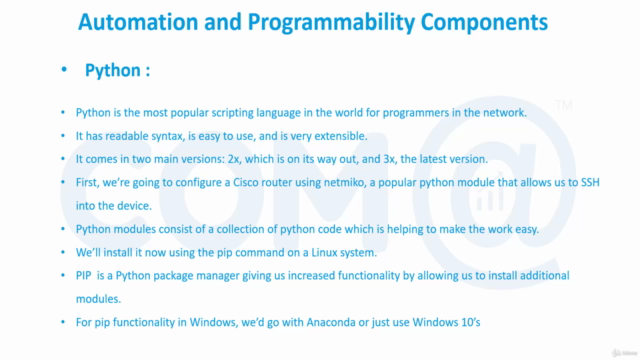

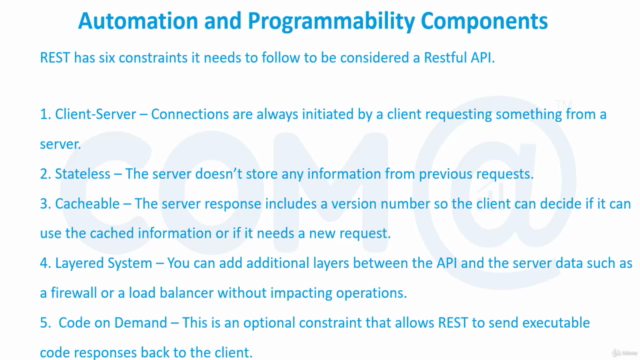
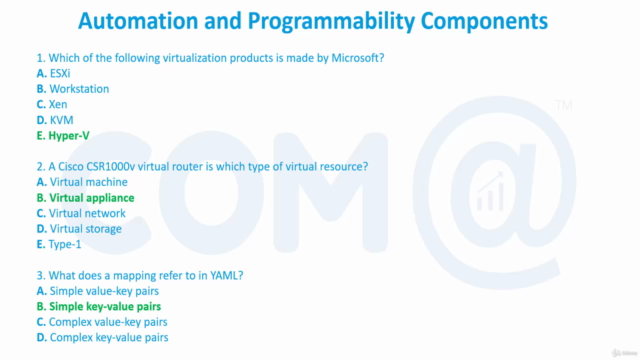
Reviews
Charts
Price

Rating
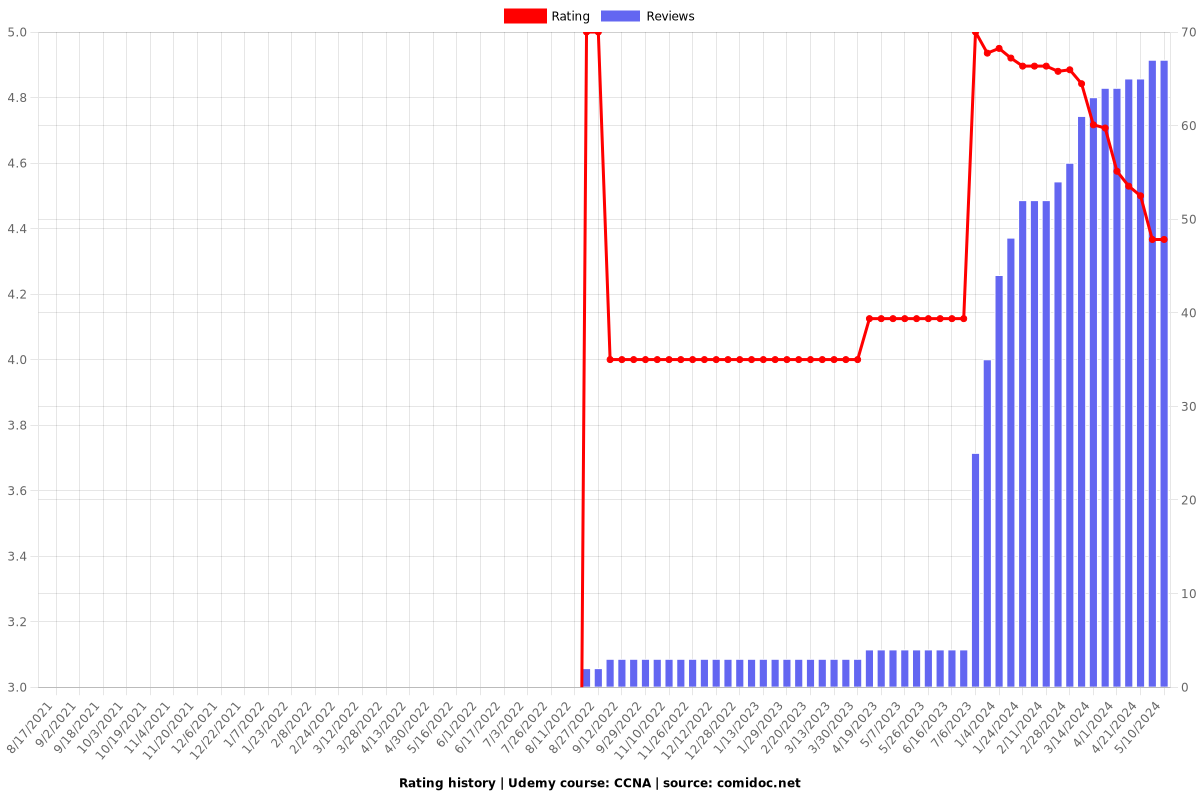
Enrollment distribution
